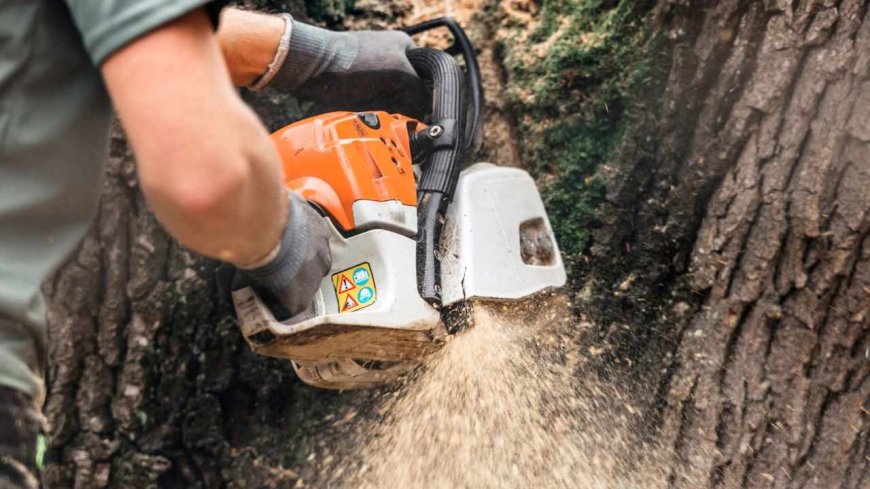Tree Pruning: The Essential Guide to Healthy, Beautiful Trees
Tree pruning is one of the best things you can do for the health, safety, and beauty of your trees. Done right, it helps trees grow stronger, live longer, and look their best. Whether you’re trimming a few small limbs yourself or calling in a pro for a major job, knowing the basics of proper pruning puts you ahead of the game.

Trees are more than just pretty additions to your yard theyre living investments that need care to thrive. One of the most important (and often overlooked) aspects of tree care is pruning. Whether you want to improve your trees health, shape, or safety, pruning is a vital step in making that happen. Lets dig into everything you need to know about pruning trees like a pro or at least knowing when to call one!
What is Tree Pruning?
Basic Definition
Tree pruning involves the selective removal of branches to promote the health, safety, and aesthetic of a tree. Its more than just snipping branches its a strategic process that impacts how a tree grows.
Common Goals of Pruning
-
Remove dead, diseased, or damaged branches
-
Improve shape and structure
-
Increase light and air flow
-
Reduce risk of falling limbs
Benefits of Pruning Trees
Promotes Tree Health
Pruning removes diseased and decaying limbs before the damage spreads to the rest of the tree.
Enhances Growth and Shape
Just like a good haircut, pruning helps shape the trees structure and encourages healthy new growth.
Prevents Safety Hazards
Dead or hanging branches can fall unexpectedly. Pruning protects people, pets, and property.
Improves Sunlight and Air Circulation
Thinning out crowded branches lets sunlight and air reach inner branches and surrounding plants.
When is the Best Time to Prune Trees?
Pruning in Winter
Dormant season (late winter) is ideal for most trees. It minimizes stress and encourages vigorous spring growth.
Spring and Summer Pruning
Light pruning is okay during the growing season but avoid cutting large limbs.
Avoiding Fall Pruning
Trees are more vulnerable in the fall, and pruning can leave them open to fungal infections.
Types of Tree Pruning Techniques
Crown Thinning
Removing select branches to let light and air through while keeping the trees shape intact.
Crown Raising
Lifting lower branches to clear space under the tree especially useful near sidewalks or driveways.
Crown Reduction
Shortening the overall height or spread of a tree. Only done when absolutely necessary.
Deadwooding
Removing dead or dying limbs that can fall or attract pests.
Pollarding
A method of severe pruning back to main branches, mostly used in urban areas to control tree size.
Tools Needed for Tree Pruning
Hand Pruners
Best for small branches (up to inch thick).
Loppers
Great for medium branches (up to 1 inches).
Pruning Saws
Needed for thicker limbs make sure the blade is sharp and clean.
Pole Pruners
Allows you to cut high branches safely from the ground.
Safety Gear
Gloves, goggles, hard hats, and sometimes even harnesses if working high up.
How to Prune a Tree Step-by-Step
Assessing the Tree
Look for dead, crossing, or crowded branches. Decide which limbs need to go and why.
Making Proper Cuts
Always cut just outside the branch collar that swollen part where a branch connects to the trunk.
Avoiding Common Mistakes
Dont leave stubs or cut too close. Avoid "flush cuts" which hinder healing.
DIY Tree Pruning vs. Hiring a Professional
When DIY is Safe
Small trees and minor trimming? Go for it with proper tools and knowledge.
Signs You Need a Pro
If the branches are too high, near power lines, or too heavy dont risk it.
Costs and Value
Hiring an arborist can cost $150$500+, but its worth it to protect your trees and your safety.
Special Pruning Considerations for Young Trees
Training the Structure
Early pruning sets the foundation for a strong, well-shaped tree later.
Encouraging a Strong Central Leader
Avoid multiple competing main stems pick one dominant trunk to guide upward growth.
How Often Should You Prune?
Based on Tree Type
-
Fast-growing trees: Every 12 years
-
Slow-growing trees: Every 35 years
Based on Tree Age
-
Young trees: Light annual shaping
-
Mature trees: Every few years for maintenance
Pruning Trees for Safety and Property Protection
Preventing Storm Damage
Removing weak limbs reduces the risk of them snapping during high winds or snowstorms.
Clearing Branches From Power Lines and Roofs
Branches rubbing on roofs or growing into utility lines are major hazards act fast.
Common Mistakes in Tree Pruning
Topping
NEVER top a tree cutting the top off leaves it weak, ugly, and prone to disease.
Over-pruning
More isnt better. Dont remove more than 25% of a trees canopy at one time.
Cutting Too Close to the Trunk
Flush cuts damage the trunk and make it harder for the tree to heal.
Conclusion
Tree pruning is one of the best things you can do for the health, safety, and beauty of your trees. Done right, it helps trees grow stronger, live longer, and look their best. Whether youre trimming a few small limbs yourself or calling in a pro for a major job, knowing the basics of proper pruning puts you ahead of the game.
FAQs
1. How do I know if a branch needs pruning?
If its dead, diseased, rubbing another branch, or growing inward it needs to go.
2. Can pruning kill a tree?
Only if done improperly. Over-pruning or making bad cuts can stress or even kill a tree.
3. Is there a wrong time to prune?
Avoid pruning in the fall or during extreme heat. Late winter is usually best.
4. How much should I prune at once?
Never remove more than 25% of the trees canopy in a single session.
5. What happens if I never prune my trees?
They may become overgrown, hazardous, or develop poor structure reducing lifespan and increasing risk.

































